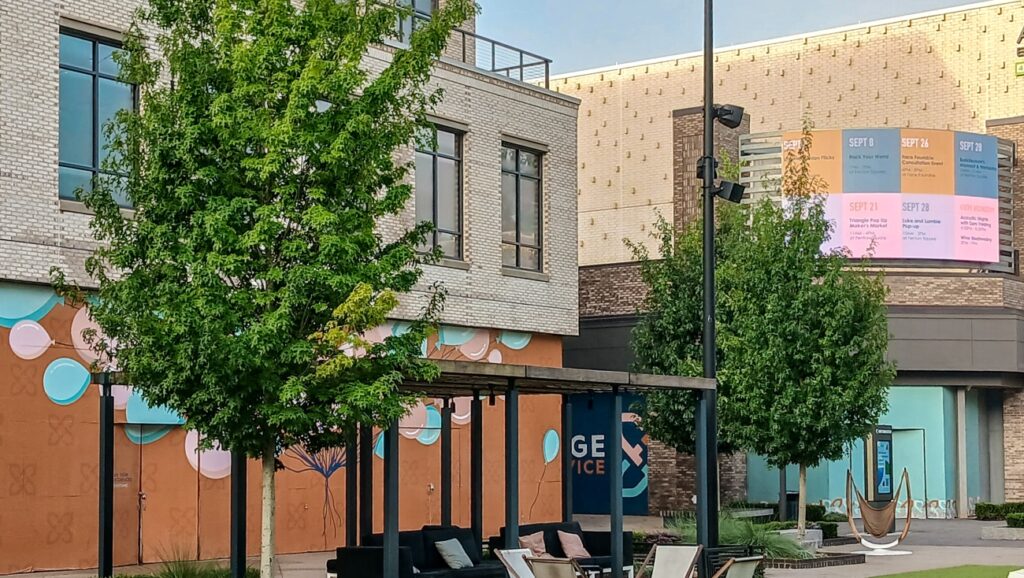This town was established north east of Bridgend in the Llynfi Valley due to good accessible reserves of coal and iron ore.
This town was established north east of Bridgend in the Llynfi Valley due to good accessible reserves of coal and iron ore. Up until the early 1820s, it was a sparsely inhabited area of small farmsteads, and there is evidence of Iron Age settlements nearby. Once mining had been proven viable, Maesteg flourished as an iron producing centre, and exported much of its product overseas. However, the invention of steel destroyed the local iron industry which could not be adapted to the new technology and the town then relied on coal mining.
Fortunately, the coal mined in the valley (the broadest in South Wales) was of the highest quality, and this industry provided much employment locally until the mines closed in the 1980s. Due to many years of mining in the area, Maesteg is served by three railway stations, terminating in Maesteg Central This has enabled to town to become a commuter town for many employed in Port Talbot, Bridgend and Cardiff, guaranteeing the future of the town. During 2000, Bridgend Council commissioned a study into improving Maesteg, and the study carried out by URBED noted a number of failing urban elements in the main retail road, Commercial Street. A number of improvements were suggested, and although a controversial project, most were adopted over the following five years. One suggestion to make Commercial Street more attractive for retail shoppers was to plant a number of street trees to soften the impression of a vehicle dominated road.
Project
Location
Contractor
Landscape Architect
This town was established north east of Bridgend in the Llynfi Valley due to good accessible reserves of coal and iron ore.
This town was established north east of Bridgend in the Llynfi Valley due to good accessible reserves of coal and iron ore. Up until the early 1820s, it was a sparsely inhabited area of small farmsteads, and there is evidence of Iron Age settlements nearby. Once mining had been proven viable, Maesteg flourished as an iron producing centre, and exported much of its product overseas. However, the invention of steel destroyed the local iron industry which could not be adapted to the new technology and the town then relied on coal mining.
Fortunately, the coal mined in the valley (the broadest in South Wales) was of the highest quality, and this industry provided much employment locally until the mines closed in the 1980s. Due to many years of mining in the area, Maesteg is served by three railway stations, terminating in Maesteg Central This has enabled to town to become a commuter town for many employed in Port Talbot, Bridgend and Cardiff, guaranteeing the future of the town. During 2000, Bridgend Council commissioned a study into improving Maesteg, and the study carried out by URBED noted a number of failing urban elements in the main retail road, Commercial Street. A number of improvements were suggested, and although a controversial project, most were adopted over the following five years. One suggestion to make Commercial Street more attractive for retail shoppers was to plant a number of street trees to soften the impression of a vehicle dominated road.
Project
Location
Contractor
Landscape Architect
Project
Location
Contractor
Landscape Architect
The Lobels Maple [Acer lobelia] tree was chosen and has been successfully planted, in GreenBlue Urban ArborSystems and now gives quite an impact without over-dominating the street scene. This species is a naturally occurring hybrid which is fastigiate in character, ideal for tight urban spaces. It is found in nature in Southern Italy, where it thrives in a low to medium pH soil.
Another successful establishment project with GreenBlue Urban, providing a long term investment in green infrastructure for all those who live work and shop in Maesteg.
The Lobels Maple [Acer lobelia] tree was chosen and has been successfully planted, in GreenBlue Urban ArborSystems and now gives quite an impact without over-dominating the street scene. This species is a naturally occurring hybrid which is fastigiate in character, ideal for tight urban spaces. It is found in nature in Southern Italy, where it thrives in a low to medium pH soil.
Another successful establishment project with GreenBlue Urban, providing a long term investment in green infrastructure for all those who live work and shop in Maesteg.
The Lobels Maple [Acer lobelia] tree was chosen and has been successfully planted, in GreenBlue Urban ArborSystems and now gives quite an impact without over-dominating the street scene. This species is a naturally occurring hybrid which is fastigiate in character, ideal for tight urban spaces. It is found in nature in Southern Italy, where it thrives in a low to medium pH soil.
Another successful establishment project with GreenBlue Urban, providing a long term investment in green infrastructure for all those who live work and shop in Maesteg.
The Lobels Maple [Acer lobelia] tree was chosen and has been successfully planted, in GreenBlue Urban ArborSystems and now gives quite an impact without over-dominating the street scene. This species is a naturally occurring hybrid which is fastigiate in character, ideal for tight urban spaces. It is found in nature in Southern Italy, where it thrives in a low to medium pH soil.
Another successful establishment project with GreenBlue Urban, providing a long term investment in green infrastructure for all those who live work and shop in Maesteg.







